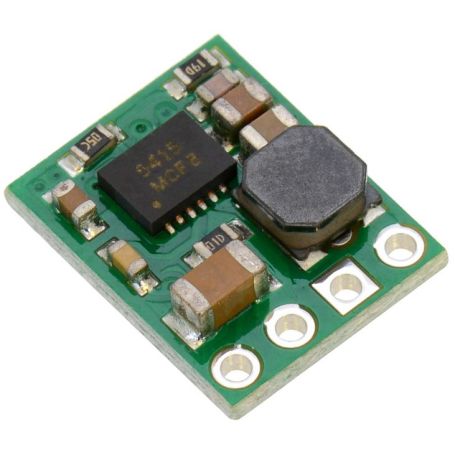1.8V 0.5A regulator, step down, D24V5F1
D24V5F1 Switching DC-DC regulator, 1.8V 0.5A, Step-Down
- Output voltage: 1.8V
- Input voltage: 36V max
- Output current: 500 mA max
Payments are secured by LyraCollect, a French payment collection company.
It is possible to delivered to your home, to a pick-up point or picked up by appointment at MCHobby
We prepare, pack and ship your orders with great respect and care.
Un régulateur de tension 1.8V voltage regulator offering 500mA for low voltage electronic project
This is a voltage regulator based on D24V5Fx Step-Down buck converter. Such regulator can accept an input voltage up to 36V and efficienlty reduce it to 1.8 V with an output current of 500 mA.
The input voltage must be higher from 1V to make this regulator working proprely.
The regulator efficiency is in the range of 80% to 93%. Such is suited for low voltage application. It also feature a Power Safe mode that get activated at low load. The quiescent current is also very low when the shutdown is activated.
Those are great regulator for low power application powered from battery.
Features
- Input voltage: up to 36 V
- Fixed 1.8 V output (4% accuracy).
- Output current: 500 mA
- Typical efficiency of 80% to 93% (depends on input voltage and load).
- Quiescent current: 200 μA typical no-load.
- size: 13 × 10 × 3 mm
- Small holes for 2.54 header pins
Wiring
This buck regulator has 4 connections: VIN, GND (ground), VOUT (output voltage) and SHDN (shutdown).
- VIN : input voltage. Powers the regulator and can be supplied with voltages from 4.5V up to 38V.
The effective lower limit of VIN is VOUT plus the regulator’s dropout voltage, which varies approximately linearly with the load from around 500 mV to 1.5 V (see below for a graph of the dropout voltage as a function of the load). - VOUT : output voltage. Is set to 5V by default.
- SHDN pin : The regulator is enabled by default with a 100 kΩ pull-up resistor on the board connects to VIN.
The SHDN pin can be driven low (under 0.4 V) to put the board into a low-power state. The quiescent current draw in this sleep mode is dominated by the current in the pull-up resistor.
Efficiency and output current
The voltage regulator efficiency is defined as (Power out)/(Power in). It is an important measure of the performance, especially when battery life or heat are concerns.
The graph below whos the switching regulators efficiency. The efficiency of 80% to 93% for most combinations of input voltage, and load. A lower efficiency imply a high power dissipation (then dissipate more heat).
The maximum output current of the board depends of several factors:
- the ambient temperature,
- air flow,
- heat sinking
- input and output voltage.
Typical dropoup voltage
The dropout voltage of a step-down regulator is the minimum amount by which the input voltage must exceed the regulator’s target output voltage in order to ensure the target output can be achieved.
Ex: if a 5 V regulator has a 1 V dropout voltage, the input must be at least 6 V to ensure the output is the full 5 V.










